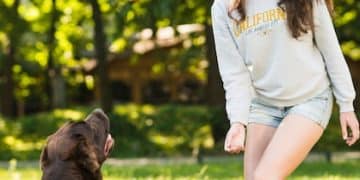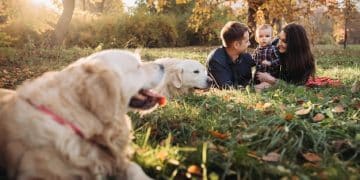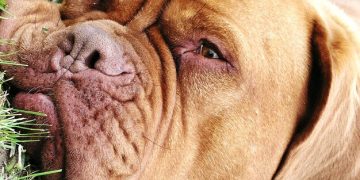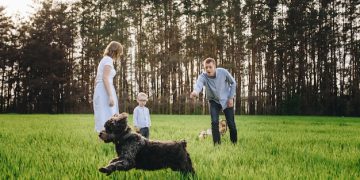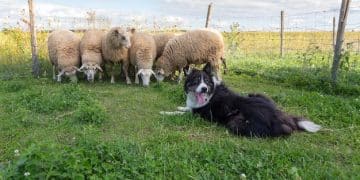Non-Sporting Dog Breeds: Profiles and Temperament for US Owners in 2025
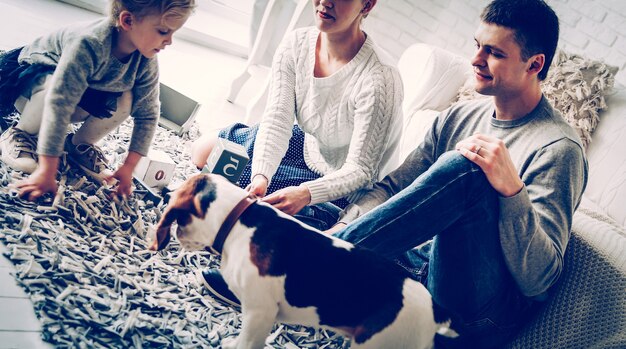
Non-sporting dog breeds are a diverse group recognized by the American Kennel Club (AKC), known for their varied appearances and personalities, making them suitable companions for US owners seeking non-traditional, adaptable pets in 2025.
Thinking of adding a furry friend to your family in 2025? If you’re looking for a dog that doesn’t necessarily fit into the sporting category, the world of non-sporting dog breeds offers a delightful array of options. These dogs are known for their unique personalities and appearances, making them excellent companions for various lifestyles in the US.
Exploring the Diverse World of Non-Sporting Dog Breeds
Non-sporting breeds are a captivating collection of dogs, each with distinct characteristics and histories. From the elegant Poodle to the sturdy Bulldog, this group showcases incredible diversity in appearance and temperament. Understanding these traits is key to finding the perfect non-sporting companion for your US home in 2025.
Historical Background of Non-Sporting Breeds
Many non-sporting breeds have fascinating histories, often evolving from working dogs or serving specific purposes throughout human history. The Dalmatian, for instance, was once a carriage dog, while the Shiba Inu held a revered place in Japanese culture. Knowing their origins can give insight into their present-day behaviors.
Key Characteristics that Define Non-Sporting Dogs
While the non-sporting group is diverse, certain characteristics unify them. These dogs are typically adaptable to various living situations, known for their companionship, and often possess moderate exercise needs. However, temperaments can vary greatly, so careful consideration is essential.
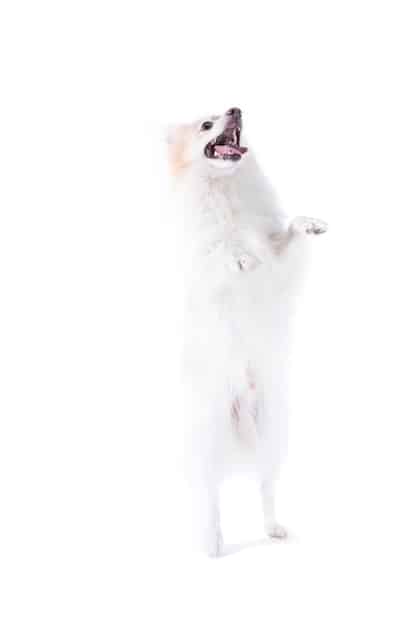
Here are some characteristics:
- Adaptability to apartment living.
- Varying exercise requirements based on breed.
- Distinct personalities ranging from playful to dignified.
- Grooming needs from minimal to extensive.
Ultimately, the non-sporting group offers a breed for almost every type of owner. Understanding their history and key traits can help you determine if a non-sporting dog is right for you and your family in 2025.
Poodle: The Intelligent and Versatile Companion
Poodles are renowned for their intelligence, hypoallergenic coats, and elegant appearance. Available in standard, miniature, and toy sizes, they offer versatility to suit different lifestyles in the US. Beyond their looks, Poodles are highly trainable and excel in various dog sports and activities.
Understanding the Poodle’s Three Size Varieties
The Poodle comes in three sizes: Standard, Miniature, and Toy. The Standard Poodle is the largest, known for its athleticism. The Miniature Poodle is a medium-sized option, fitting comfortably in apartments and homes. The Toy Poodle is the smallest, often favored as a lap dog.
Training and Exercise Needs of Poodles
Poodles are highly intelligent and eager to please, making them relatively easy to train. They require regular exercise to stay stimulated, both mentally and physically. Activities like swimming, fetching, and agility training are excellent for Poodles of all sizes.
When considering a Poodle, keep these aspects in mind:
- Mental stimulation is as important as physical exercise.
- Early socialization is crucial for Poodles of all sizes.
- Grooming can be time-consuming and costly.
- They are prone to certain genetic health issues.
Overall, the Poodle makes an exceptional companion for active individuals and families willing to invest time in training and grooming. Their intelligence and hypoallergenic coat make them a popular choice among US dog owners in 2025.
Bulldog: The Courageous and Friendly Breed
Bulldogs are known for their distinctive appearance and gentle, yet courageous, nature. As a breed, they are characteristically friendly and are often popular in the US as family pets, renowned for their loyalty and low-maintenance grooming needs.
Bulldog Temperament and Personality Traits
Bulldogs are generally calm, good-natured, and get along well with children and other pets. They are known for their stubbornness, however, so early training and socialization are key. Despite their imposing appearance, Bulldogs are often quite lazy and enjoy lounging around.
Considerations for Bulldog Health and Care
Bulldogs are prone to certain health problems, including brachycephalic syndrome, which can cause breathing difficulties. They also require careful attention to their skin folds to prevent infections. Regular veterinary checkups are critical to ensure a Bulldog’s well-being.
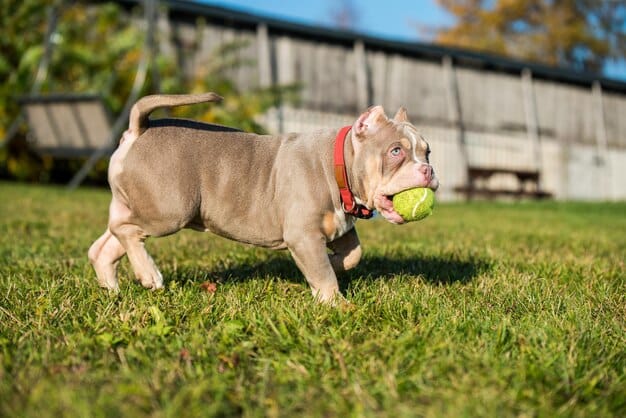
Here are some vital things to realize when thinking about a Bulldog:
- They do best in moderate climates due to their breathing issues.
- A high-quality diet is essential to maintain their health.
- They require regular, gentle exercise to combat obesity.
- They thrive on affection and attention from their owners.
In summary, Bulldogs can make wonderful companions for owners who are aware of their specific health needs and are willing to provide the necessary care. Their gentle nature and low exercise needs make them a good fit for many US households in 2025.
Dalmatian: The Energetic and Loyal Companion
Dalmatians are famous for their striking spotted coats and boundless energy. Originating as carriage dogs, they require plenty of exercise and mental stimulation to thrive. Their loyalty and affection make them wonderful family pets for active US households.
The Dalmatian’s Historical Role and Modern Temperament
Dalmatians have a rich history, serving as carriage dogs, firehouse mascots, and even war dogs. Their modern temperament is generally friendly and outgoing, but they can be reserved with strangers. Early socialization and training are crucial for well-adjusted Dalmatians.
Exercise and Training Requirements for Dalmatians
Dalmatians are high-energy dogs that require significant exercise to prevent destructive behaviors. Daily runs, hikes, or play sessions are essential. They also excel in dog sports like agility and rally. Positive reinforcement training methods work best for this intelligent breed.
Here are some things to take into consideration:
- They need consistent training and a firm, yet gentle, hand.
- Early socialization is critical to overcome their reserved nature.
- They are prone to certain genetic health issues.
- Their short coats require regular brushing to minimize shedding.
In conclusion, Dalmatians can make amazing companions for active families who can provide them with enough exercise and mental stimulation. Their loyalty and intelligence make them rewarding to train, and their unique appearance is sure to turn heads in the US in 2025.
Shiba Inu: The Independent and Spirited Breed
Shiba Inus are known for their fox-like appearance, independent nature, and spirited personality. Originating in Japan, they have become increasingly popular in the US as unique and intelligent companions. Understanding their temperament and training needs is key to successful ownership.
Understanding the Shiba Inu’s Unique Temperament
Shiba Inus are known for their independent and aloof nature. They are not typically cuddly dogs and can be wary of strangers. However, they are fiercely loyal to their families and can be quite playful. Understanding their unique temperament is essential for successful training.
Training Challenges and Strategies for Shiba Inus
Shiba Inus are notoriously difficult to train due to their independent nature. Positive reinforcement methods, consistency, and patience are crucial. Early socialization is also important to prevent aggression towards other dogs. Professional training may be beneficial for inexperienced owners.
When considering a Shiba Inu, keep these factors in mind:
- They require early socialization to prevent aggression issues.
- They are prone to escaping, so secure fencing is essential.
- Their thick coats require regular brushing.
- They can be picky eaters.
To summarize, Shiba Inus can make amazing companions for experienced dog owners who appreciate their independent nature and are willing to invest time and effort in training and socialization. Their unique personality and striking appearance set them apart in US homes in 2025.
Bichon Frise: The Cheerful and Affectionate Companion
Bichon Frises are known for their cheerful disposition, fluffy white coats, and hypoallergenic qualities. These dogs thrive on human companionship and make excellent family pets for US households. Understanding their grooming and exercise needs is essential to keeping them happy and healthy.
The Importance of Grooming for Bichon Frises
Bichon Frises have dense, curly coats that require regular grooming to prevent matting and skin problems. Daily brushing and professional grooming every 4-6 weeks are essential. Owners should also pay attention to their tear stains and clean them regularly.
Exercise and Socialization Needs of Bichon Frises
Bichon Frises are relatively low-energy dogs that require moderate exercise to stay fit and happy. Daily walks, playtime, and engaging toys are sufficient. They also thrive on human interaction and enjoy being part of a family. Early socialization is important for well-adjusted Bichons.
Key points about a Bichion Frise:
- They thrive on human companionship and attention.
- They are prone to certain genetic health issues.
- Their hypoallergenic coats make them suitable for allergy sufferers.
- They require consistent training to prevent barking issues.
Overall, Bichon Frises make incredibly rewarding pets for families and individuals who are looking for a cheerful and affectionate dog. Their hypoallergenic coats and adaptable personalities make them a popular choice for US dog owners in 2025.
Chinese Shar-Pei: The Loyal and Independent Breed
Chinese Shar-Peis are known for their distinctive wrinkles, independent nature, and loyalty to their families. Originating in China, they have become increasingly popular in the US as unique and protective companions. Understanding their specific health and training needs is key to providing them with a happy and healthy life.
Understanding the Shar-Pei’s Unique Health Considerations
Shar-Peis are prone to several health issues, including Shar-Pei Fever, skin infections, and eye problems. Regular veterinary checkups are essential to monitor their health. Owners should also pay close attention to their skin folds and clean them regularly to prevent issues from arising.
Training and Socialization for Shar-Peis in the US
Shar-Peis are known for their independent and stubborn nature, making training a challenge. Early socialization and consistent training methods are key to establishing boundaries. They can be wary of strangers, so early exposure to new people and places is crucial.
These are some factors to be considered when owning a Chinese Shar-Pei:
- They require early socialization to prevent aggression issues
- They thrive in colder climate
- Daily walks and playtime are important
In summary, Chinese Shar-Peis make loyal and protective companions for experienced dog owners. Owners should also pay close attention to the skin folds to prevent issues from arising. Their unique look makes them stand out in US homes in 2025.
| Key Point | Brief Description |
|---|---|
| 🐩 Poodle | Intelligent, versatile, and hypoallergenic breed. |
| 🐶 Bulldog | Friendly, courageous, and low-maintenance grooming needs. |
| 🐕 Dalmatian | Energetic and loyal, requires plenty of exercise. |
| 🦊 Shiba Inu | Independent and spirited, requires experienced owners. |
Frequently Asked Questions
▼
Non-sporting dogs are a diverse group that don’t fit neatly into other categories. They vary widely in size, coat type, and temperament, making them unique companions.
▼
Many non-sporting dogs make excellent family pets, depending on the breed. Breeds like the Bichon Frise and Bulldog are generally good with children and other pets.
▼
Health concerns vary by breed, but some common ones include skin issues, breathing difficulties (especially in brachycephalic breeds), and certain breed-specific genetic conditions.
▼
Exercise needs vary among non-sporting dogs. Some breeds, like Dalmatians, require a lot of exercise, while others, like Bulldogs, are more low-key and need only moderate activity.
▼
Trainability varies by breed. Poodles are highly trainable, while breeds like Shiba Inus can be more challenging due to their independent nature. Consistency is key for all breeds.
Conclusion
Choosing the right dog breed can be an exciting but also challenging endeavor. The non-sporting dog breeds offer a diverse range of temperaments and traits, making them suitable companions for many lifestyles in the US in 2025. Thorough research and understanding of each breed can lead to years of companionship from your selected non-sporting dog.
